Newsletter
Eat your way across L.A.
Get our weekly Tasting Notes newsletter for reviews, news and more.
You may occasionally receive promotional content from the Los Angeles Times.
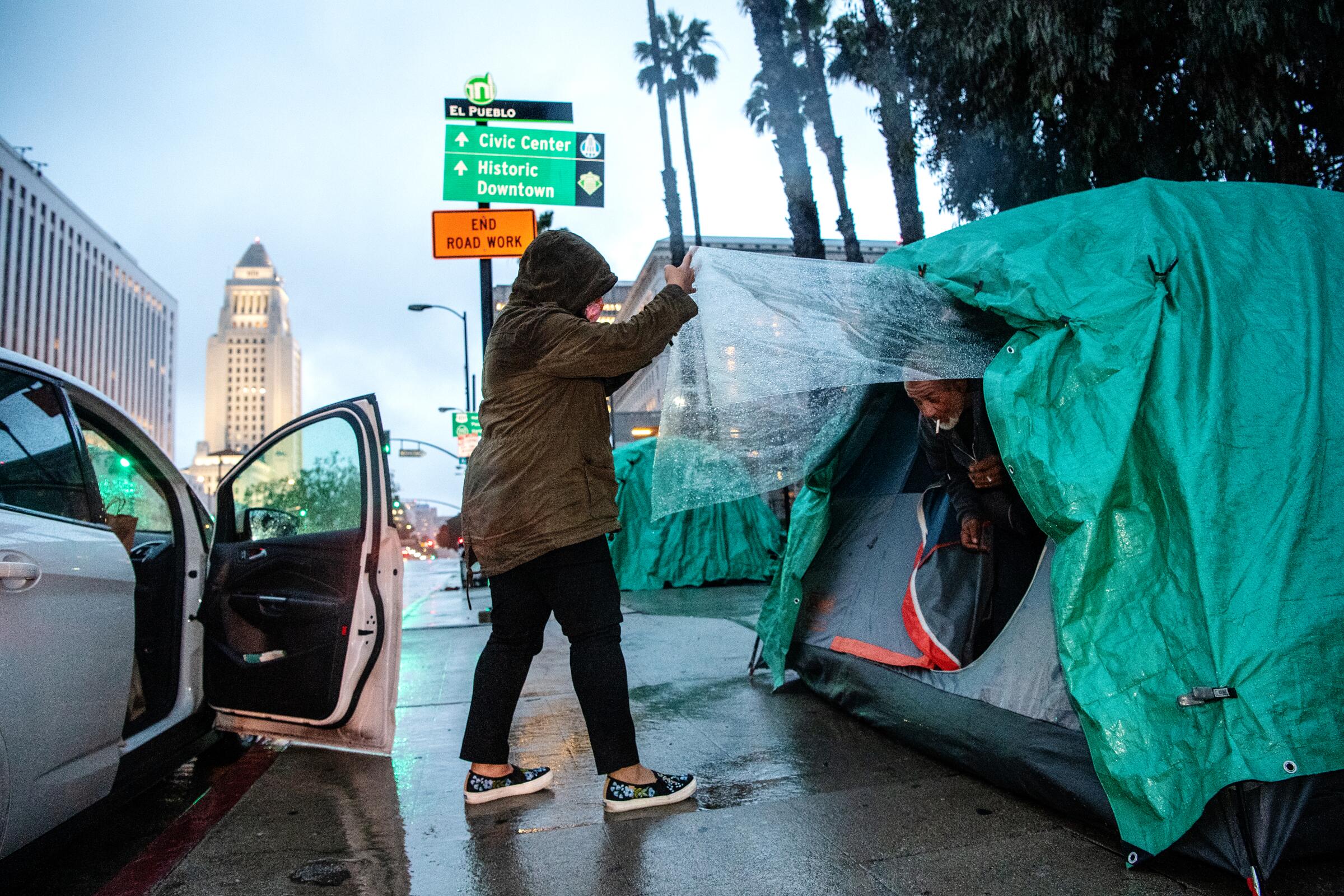
During the day, Melissa Acedera works from her home in Burbank, putting in hours at her full-time job doing research and compliance work for food companies.
In between those long hours, she’s also coordinating hundreds of food drops throughout Los Angeles.
When night falls, she’s part of a dedicated network of volunteers at nonprofits, churches and shelters who are trying to keep Los Angeles’ homeless communities fed during the global coronavirus outbreak.
Along with every other facet of normal life, the pandemic has disrupted pathways to L.A.’s homeless. There’s more competition for food supplies in store aisles, diminishing a vital reservoir that food pantries and shelters have traditionally relied upon. City officials, meanwhile, have said protecting the residents of skid row — home to the largest concentration of homeless people in the country — is critical to slowing the spread and dampening the effects of the coronavirus for the city at large.
“At some point, you’re definitely responsible if you don’t respond,” said Pete White, executive director of the skid-row-based Los Angeles Community Action Network (LA CAN). “If you don’t move, if you don’t find food, if you don’t find out how to get people fed and sheltered, you’re part of the problem.”
Homeless residents are especially vulnerable because they’re more likely to have underlying health conditions and often live in close proximity with limited access to sanitation resources. A recent study found that an estimated 2,600 homeless people in L.A. will need to be hospitalized for COVID-19 and that about 900 will require intensive care, further straining overburdened hospitals.
Things grew more alarming on March 31, when a male employee at the Union Rescue Mission tested positive for COVID-19 — the first confirmed case on skid row. He died in the ICU at Los Angeles County-USC Medical Center, said the Rev. Andy Bales, chief executive of the shelter. As of April 8, the number of cases had grown to 12, according to Barbara Ferrer, director of the Los Angeles County Department of Public Health.
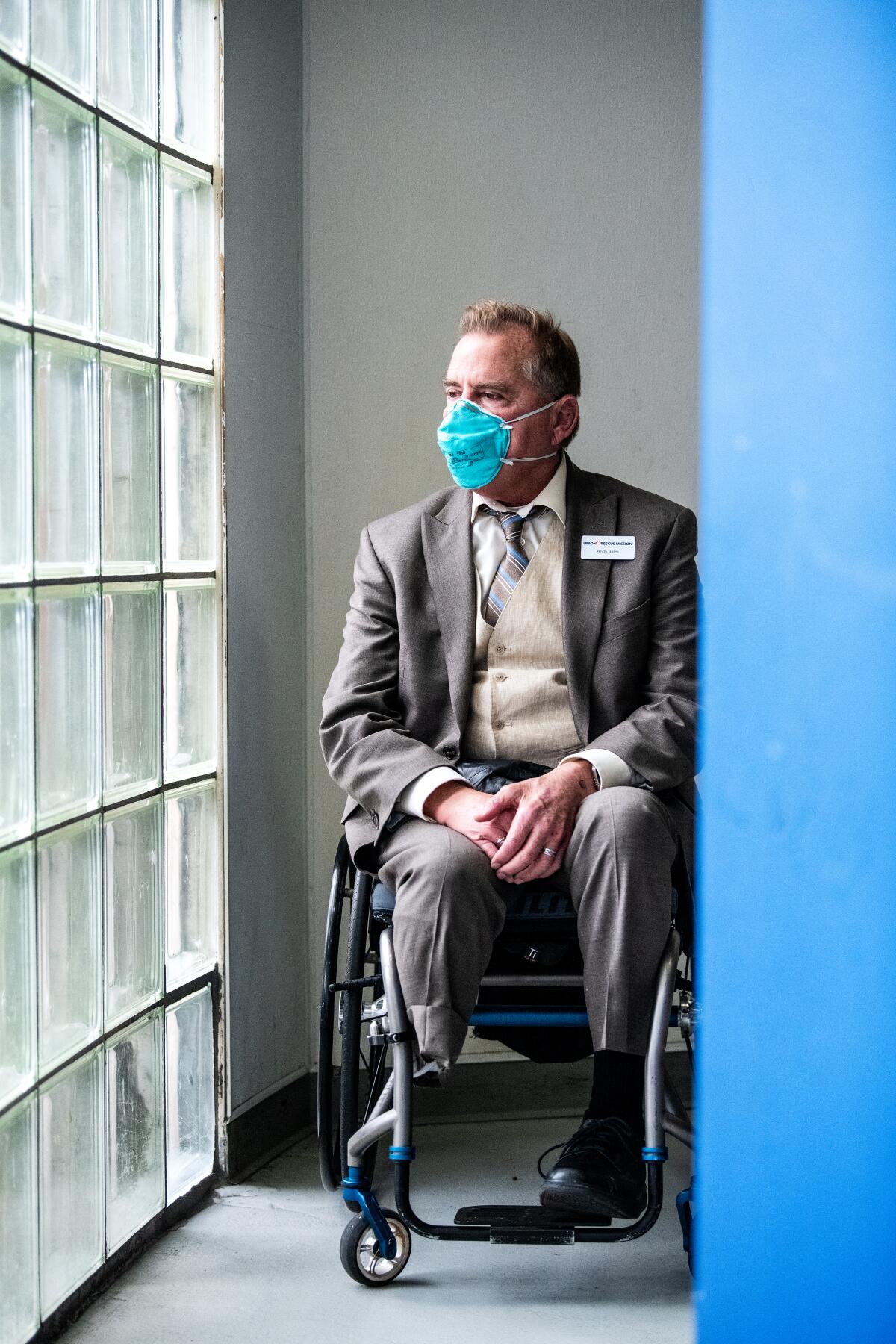
“This is so much tougher than the Great Recession. So much tougher than losing my right leg,” said Bales, who gets around in a wheelchair after having part of his right leg amputated due to staph infection contracted from his work on the streets of skid row. “There has been nothing to rival what we’re going through right now.”
Acedera is an air-traffic controller of sorts for food distribution. During the day, while she works her full-time job, she’s reaching out to grocery stores to schedule pickups, fielding calls from volunteers and trying to move vital food supplies in their direction. At night she sets out from her home to pick up and deliver meals to sites all around the city.
“Moving food is not easy. It’s a pain in the ass to move food,” said Acedera, who works closely with the homeless outreach and advocacy group Ktown for All and her own organization, Polo’s Pantry. “I’m doing what I can with the time that I have.”
Mutual aid among groups is “at an all-time high,” White said. “We’ve been earnestly trying to fill public health gaps.”
Problems in the supply chain started with hoarding, he said. When fear drove people to empty store shelves and fatten their larders, that meant there was less available to make its way to the homeless. LA CAN has had to suspend its weekly produce market on East 6th Street after vendors began shutting down too. It has since begun assembling “survival kits” with food and essential supplies to distribute to its most vulnerable members: seniors and those with compromised immune systems.
Hoarding is a privilege, White said. Most homeless residents don’t have the luxury of storing food and essential supplies, let alone ease of access to stores.
“Be prepared with at least 14 days of food? That’s easier said than done,” he added. “If that’s the guidance you’re getting from the CDC, it lets you know that there are huge blind spots. It’s one thing to know what’s going to happen, it’s another thing to experience the impacts of food not being there. … That’s a stressful situation on top of an already stressful situation of being houseless in Los Angeles.”
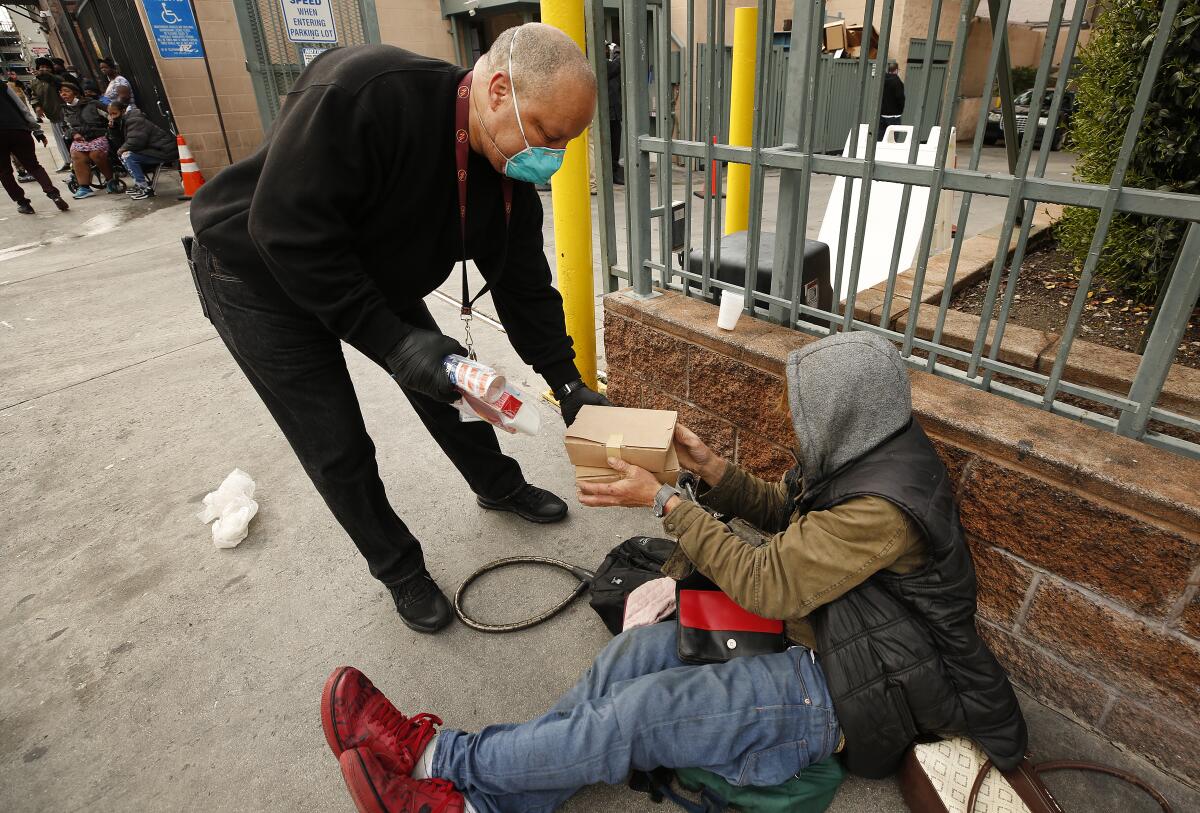
As fear over the pandemic and ensuing hoarding began to put a chokehold on the food supply, Bales considered the stockpile at his shelter, which he estimated will last four to six weeks.
“I saw the huge lines and I started thinking, ‘Where are we going to get food?’” he said. The pandemic had begun to dry up a valuable tributary for many shelters and organizations: charitable giving.
Bales reached out to his network of donors and friends, including Patty Phillips of Patty’s Gourmet Pizza.
These are some of the unusual new scenes across the Southland during the coronavirus outbreak.
“She came through and everybody got together and we decided to purchase enough pizza for four meals a week,” Bales said. An unnamed donor has since stepped up to supply the funds to purchase more pizzas. The shelter is also receiving twice-weekly meals from Subway and longtime supporter Porto’s Bakery.
“Suppliers are going out of business, restaurants are going out of business. We just had to think about who’s been our friend,” Bales said.
The shelter remains open for thrice-daily meals even as many skid row shelters have shifted to grab-and-go operations. It has implemented social distancing measures, in addition to setting up quarantine zones. The mission is serving 3,000 meals every day and Bales said the demand for lunch has grown by 40%.
“It’s a moment to sit down and enjoy one hot meal a day,” Bales said. “It’s a point of affirming people’s dignity. I’ve watched and they love to sit and communicate. During this pandemic, they want to cling to our place and humanity.”
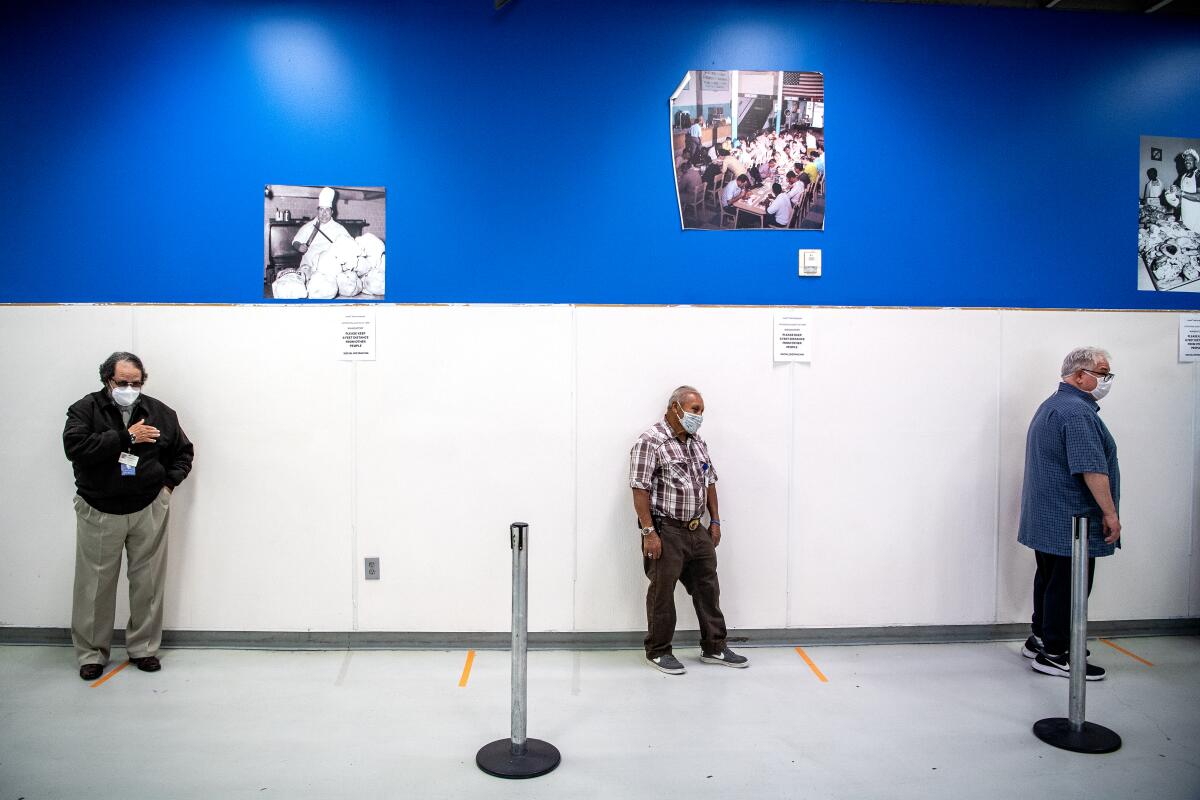
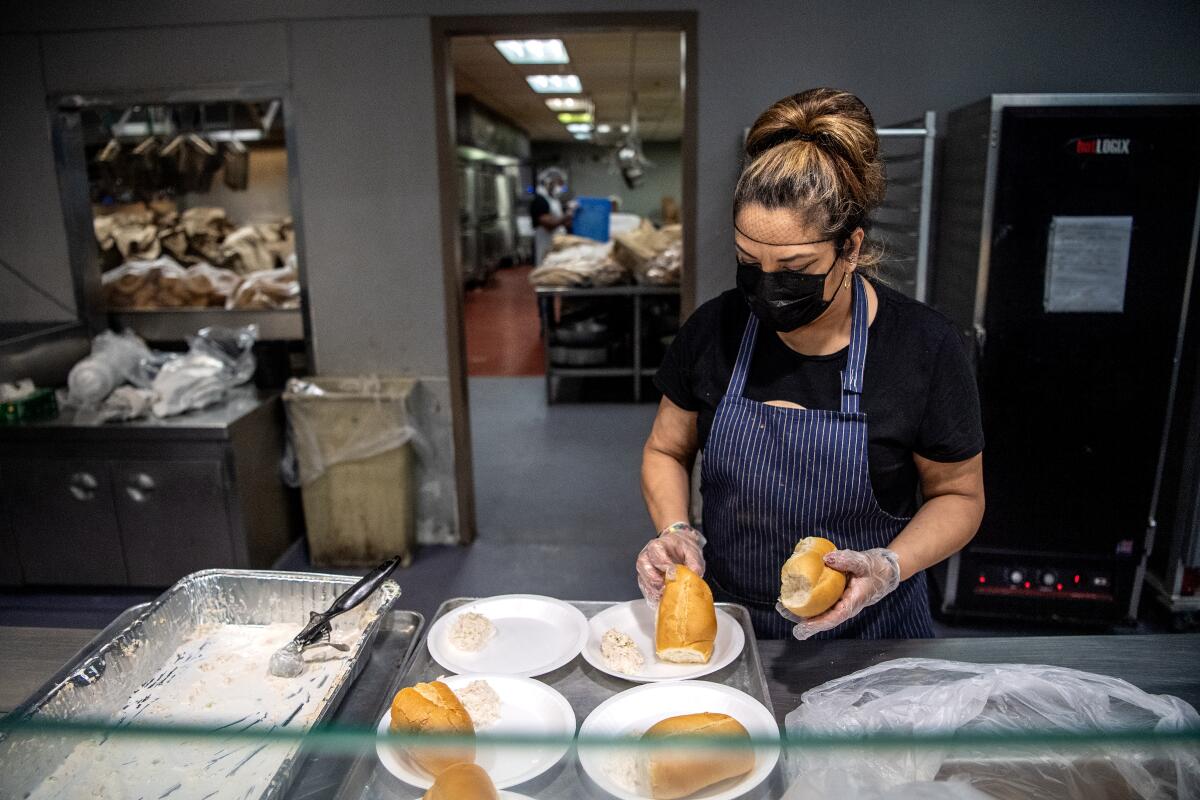
The Los Angeles Mission in skid row has also felt the effects of hoarding and social distancing, Chief Executive Herb Smith said. Although it received a donation from Veggie Grill and seven pallets of food from Staples Center, it has had to suspend regular meal service — a move Smith doesn’t “like, but it’s the only option we have.”
Instead, the mission has shifted to preparing walk-up meals for skid row residents. It is still running its food box program, which distributes roughly 50 baskets of food and essential supplies each Wednesday to low-income families.
“We are seeing a decrease in the smaller individual kinds of cans that we provide in food boxes, so we’re asking people to step up with food donations,” Smith said.
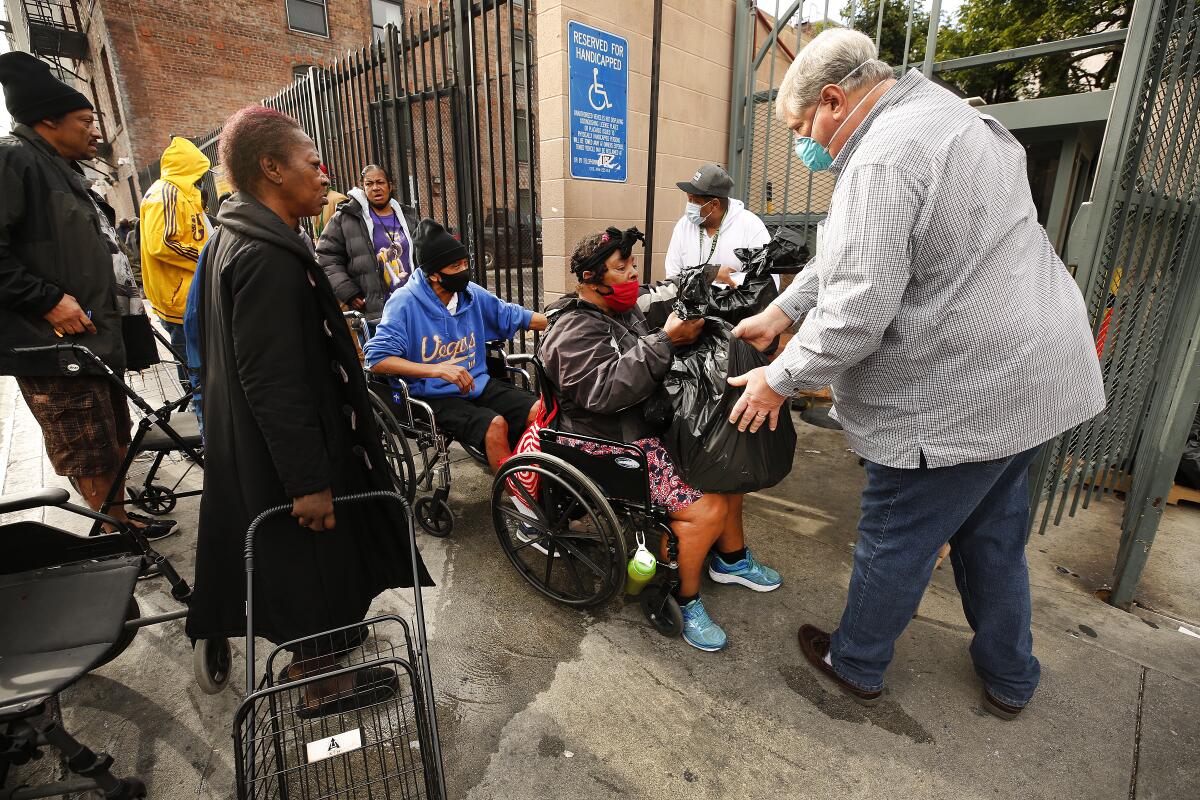
Unemployment claims in California have surged to a staggering 2.4 million since March 12, according to Gov. Gavin Newsom. When Mayor Eric Garcetti issued an emergency action completely shutting down city bars and closing dine-in service at restaurants in L.A., many food service workers were immediately put in dire straits. That has advocates worried about a surge in people being pushed into homelessness.
“The tsunami is imminent,” White said. “We see it. You know it’s coming. The pandemic is going to spring this leak.”
La Placita, the church near historic Olvera Street, is a regular source of daily hot meals for the neighborhood’s homeless and low-income residents. But the pandemic has disrupted service — a “nightmare” scenario for food distribution volunteers working in an “already fragile system,” said Acedera, who regularly drops off food in the area.
“A lot of my friends who run a food pantry or food bank are completely stretched. We were planning on doing this for a month tops,” she said. “So we’re trying to figure out a system to sustain this. It’s gonna get worse because more people are going to sign on for government assistance. If the government doesn’t find a radical solution, so many people are going to go hungry.”
Eat your way across L.A.
Get our weekly Tasting Notes newsletter for reviews, news and more.
You may occasionally receive promotional content from the Los Angeles Times.